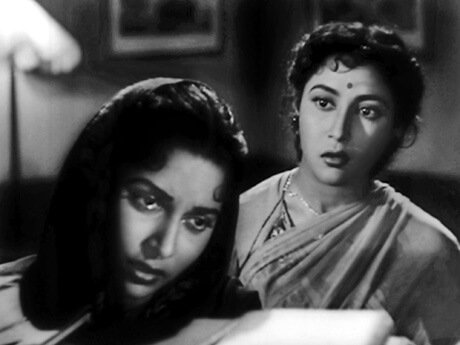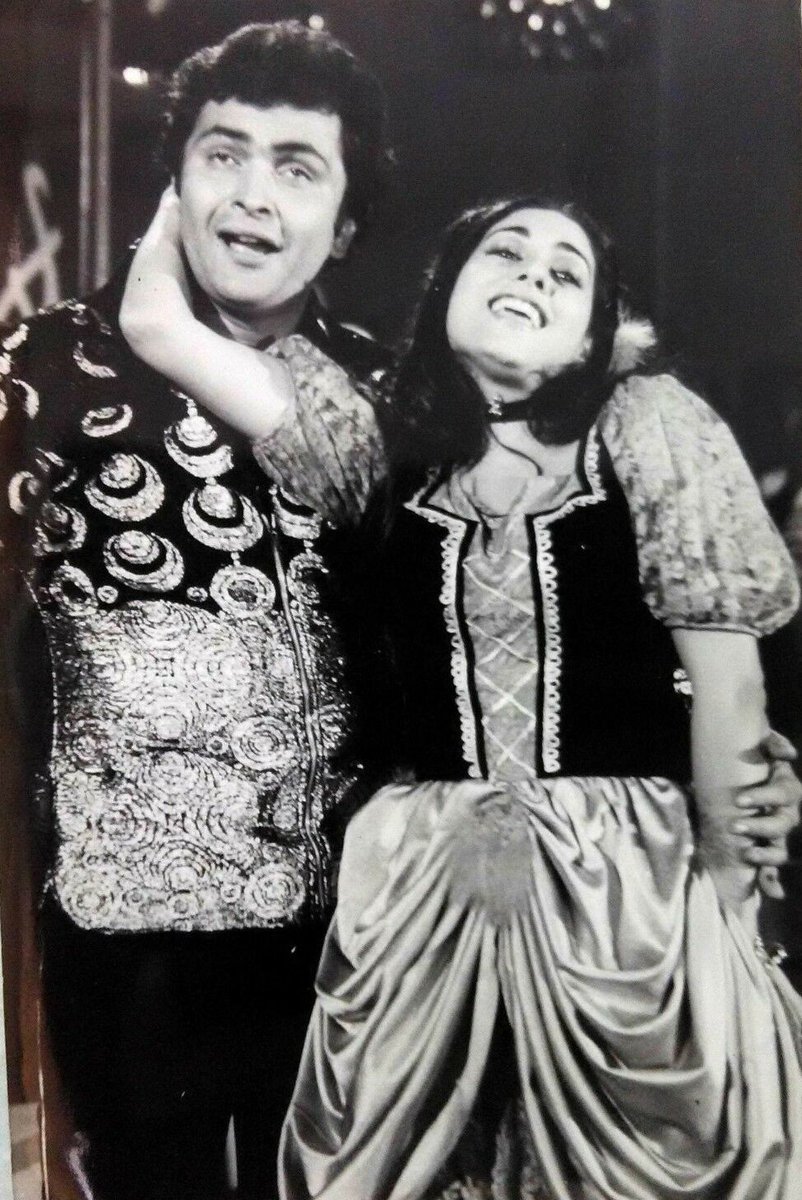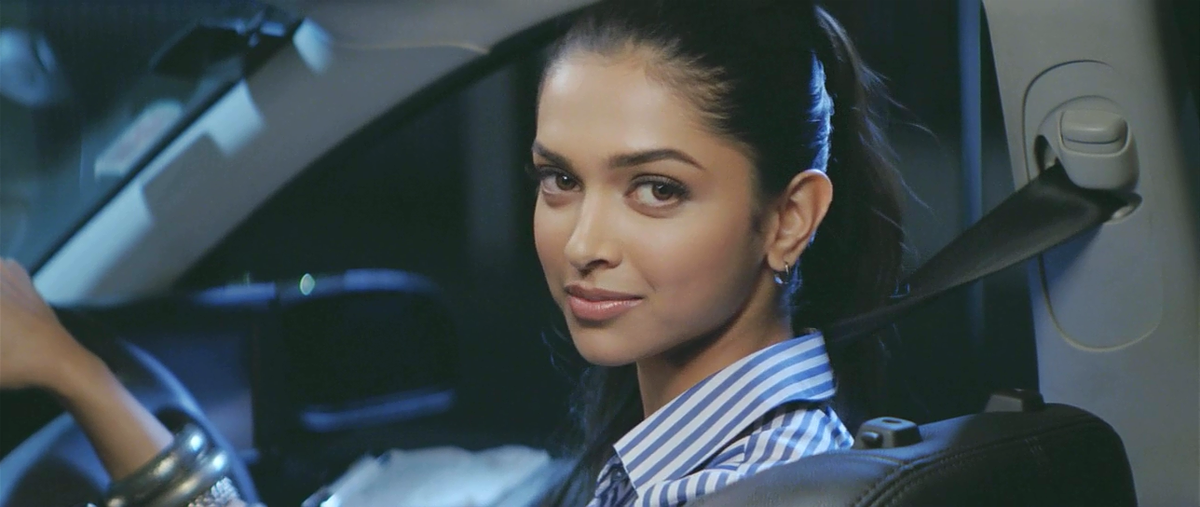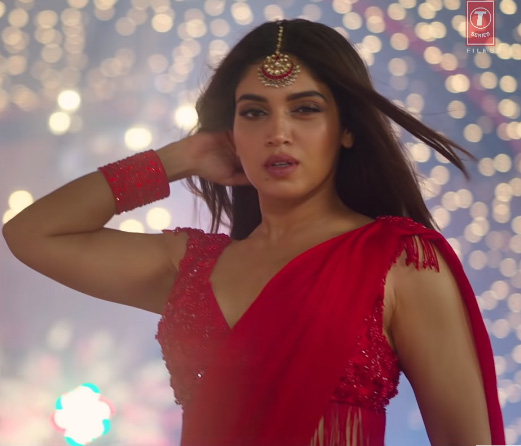Woot, superficial history post! The best kind of history post, why bother digging into complexities when I can just make broad generalizations and simple categories?
Obviously, I expect you all to add on details and additional films and also point out the contradictions to my statements in the comments. This is just broad strokes.
1935-45: The first decade that Hindi film really got rolling. There were a lot of kind of sophisticated dramas with woman torn between their desires and social rules. But the true “bad girls” were the ones in the “stunt” films and “fantasy” films. Evil witches, and female fighters, and spoiled princesses, all kinds of woman who broke the rules. Watch Miss Frontier Mail, or Aladdin Aur Jadui Chirag. “Bad” is the antagonist of the film, “good” is the protagonist of the film, minimal funky gender rules.

1945-55: Fantasy films just kept coming! But meanwhile the higher class films were moving into a zone of “western=bad” in a kind of depressing way. The classic example is Andaz, in which our heroine Nargis is punished for wearing pants and being friendly to a non-related man by losing everyone she loves and going to jail for the rest of her life. Or Aah, in which Nadira is “redeemed” for wearing pants and things when she learns to fall in love with a lowly peasant man. Or Mr. and Mrs. 55 where Madhubala is forced to marry in order to secure her inheritance, and then falls in love with her husband and learns that true happiness is in being a wife. “Bad” is westernized”, “good” is traditional faithful bride.

1955-65: And now the virgin-vamp enters! Shree 420 and Nargis versus Nadira is the classic example, our innocent hero has his head turned by a Bad Woman before returning to his Good Woman. There are some interesting variations, like Pyaasa, in which the “good” woman is Waheeda Rahman’s streetwalker and the “bad” woman is Mala Sinha the respectable wife. In this era, “good” meant being faithful and devoted to your man and greater Indian society, while “bad” meant being westernized and unfaithful to love.

1965-1975: The best era! Suddenly westernized isn’t that bad, “good” women could wear pants and have careers and big awesome bouffants. They could also love more than one man in their lifetime. They could even be minor criminals, it was all cool. The only really “evil” then they could do was something against the greater good of India. Working with the big mob boss or whatever. And even there, they could be just miss-guided and ultimately redeemed through a tragic death. An Evening in Paris and Sharmilee are just the most delightful examples of “tragic bad girl”, and pretty much every other movie is an example of “awesome modern woman who is westernized but still good”.

1975-1985: A very odd era. The “good” woman is totally sexless and saintly, and the “bad” woman is insanely overly sexual. Weird part is, the same woman can be both! Before marriage, you have the heroine sneaking around and doing fun happy sexy songs. After marriage (or “marriage”, meaning the moment the hero and heroine officially confess their love), you have the same person suddenly only wearing saris and being all noble and enduring. WEIRD. Anyway, Disco Dancer, Saagar, Karz, all kinds of examples of the peppy young heroine who suddenly gets boring and tiresome post confession of love.

1985-1995: After years of steadily aging heroes in action films, the Indian audience was sick of it. Time for some young romance! Problem is, the rules for a young romance heroine are extremely restrictive. While the hero is a little bit naughty and a little bit experienced, she has to be pure and innocent and untouched. In an action film, the heroine could be sexually aggressive and speed the romance up a bit. In an older love story, the heroine can have a job and maybe even some romances in her past. But if it’s a Pure Young Love story, the heroine has to be innocent so the hero can chase her so we can have an actual plot. Suddenly the “good” girl was the shy one who has no time for boys, and the “bad” girl was anyone who wasn’t that. Dilwale Dulhania Le Jayange with innocent Kajol and her fast friend Sheena, Maine Pyar Kiya with freakishly innocent Bhagyashree and evil sexy Pervin Dastur, Chaahat with saintly doctor Pooja and evil Ramya Krishnan.

1995-2005: My least favorite era! It took the innocent inexperienced heroines of the 90s and aged them up a bit to be modern and stuff, but kept them innocent. So we have insane things like Preity, heroine of Kal Ho Na Ho, 20-something New York woman, who is untouched by love and finds it totally normal for a man to propose on their first date. Or Rani in Chalte Chalte, career woman raised in the West, who is in love after one date and then obediently agrees to marry the man her father picked out anyway. And the “bad” women become evil golddigers (also in Kal Ho Na Ho) or ridiculously sexualized Lillette Dubey in….everything.

2005-2015: And we start rolling backwards and forwards all at once! On the one hand, you have the innocent good Indian girls like Anushka in Rab Ne Bana Di Jodi or Kareena in Jab We Met. And on the other hand, you have the modern upperclass urban woman like Deepika in Bachne Ae Haseeno or Preity in Salaam-Nameste. They date outside of marriage, they have casual sex, they drink, they dance, life’s good. Of course, similar to the heroines of the 1940s, they still have to be “reformed” and realize the importance of true love, but at least they are out there doing things. Not so coincidentally, this was the era when the audience for Hindi films became firmly divided between “single screen” and “multiplex”. The “good girls” of the single screen films were happy slightly brainless young Indian women with minimal romantic experience, or jobs. The “good girls” of the multiplex films were a little bit wild and still growing up, but came around in the end to being, well, the same as the good girls of the single screen. So maybe not that progressive after all.

2015-?: And we keep moving on! New era, village woman with minor jobs (but not careers) who might drink, might even be sexually experienced, but end up married to someone their family approves of and happy about it. Basically the multiplex women but dressed up in village costumes. Bhumi in Pati Patni Aur Woh, Kriti in Bareilly Ki Barfi, and so on.


That last thought is pretty depressing. I for some reason thought the new heroines were pretty emancipated. Are there any true bad girls out there now? They all get reformed I think.
LikeLike
Well it’s complicated, because a happy ending is being married, right? So you need to show marriage as a continuation of “bad” instead of the end of it for them to be a not-reformed bad girl, and that’s hard. I kind of like the last twist in Bareilly for that reason, Kriti just wants marriage and stuff, but she is still breaking the rules a bit.
Have you seen Tumhari Sulu? It won awards but then ended up in streaming rights limbo so not many people have seen it. That one works, Vidya goes on a personal journey to find fulfillment outside of being a housewife and (while she loves her husband and son) she stays in the rebel role straight through to the end.
On Mon, Mar 9, 2020 at 2:57 PM dontcallitbollywood wrote:
>
LikeLike
Aren’t there antagonist bad girls, though?
I did see it! I loved it, too. It’s on either netflix or Prime here, idk what the problem in the US is.
LikeLike
Oooo! Looks like it’s on Prime here too! Don’t know since when I think I haven’t looked for it for a couple years at least. Anyway, excuse to repost my review I think!
On Mon, Mar 9, 2020 at 3:04 PM dontcallitbollywood wrote:
>
LikeLike
Tabu in Andhadhund is the only recent antagonist bad girl I can think of.
LikeLike
I feel like there must be more I am forgetting, if only in bad low budget action film kind of movies. But maybe not, maybe we really are in a low period of the bad girl.
LikeLike
Badla. Or is Taapsee not really the antagonist?
LikeLike
YES! Thank you, yes. And Amrita Singh in that might also qualify.
On Tue, Mar 10, 2020 at 9:33 PM dontcallitbollywood wrote:
>
LikeLike
I haven’t seen that many movies from after 2015, so my opinion isn’t particularly well-informed but the definition of so called bad girls has changed, hasn’t it? Stuff like drinking, pre-marital sex doesn’t make the lead female bad anymore. Maybe that’s why we don’t get to see ‘bad girls’ in movies anymore.
Off the top of my head, Disha Patani’s character in Malang drinks, does drugs and has no-strings-attached sex but isn’t seen as the bad girl. Neither is Alia’s character shown as the bad girl for drinking or having sex in Humpty Sharma Ki Dulhania. She’s still portrayed as a sheltered, innocent girl, just not as naive as her protective father thinks she is.
LikeLike
Maybe we need a new category for “troubled” girl. Disha in Malang isn’t being held up as a role model “good” girl, and is punished for her “sins”, but she also isn’t really that kind of empowering tough strong bad girl I want.
On Mon, Mar 9, 2020 at 3:48 PM dontcallitbollywood wrote:
>
LikeLike
Priyanka in Aitraaz is a bad girl I think. And maybe Genelia in Jaane Tu Ya Jaane Na?? I mean she’s nice to her friends and all but kind of aggressive and rude at times. But I guess that’s a toned down, romcom version of a bad girl. I would like to see Cruel Intentions level kind.
LikeLike
I was considering Genelia, but she’s more like a tomboy version of bad girl, right? Whatever you call that. “bad kid”?
On Mon, Mar 9, 2020 at 7:14 PM dontcallitbollywood wrote:
>
LikeLike
Where do you put Alia in Raazi or Gully Boy or Dear Zindagi? Or action roles like Taapsee in Naam Shabana or Sonakshi in Akira or Vidya in Kahaani? Or does it have to be a romance for bad girl rules to apply?
LikeLike
hmm. I would say Alia in Raazi, no, because ultimately she was still a good faithful wife and did everything the men told her (in a twisted way, but that was her character journey).
Gully Boy, yes, because she disobeyed her parents and had sex and stuff.
Dear Zindagi, no, because she was tormented.
And of the action films, maybe only Sonakshi in Akira. So I guess it gets down to whether or not you obey your parents!
On Tue, Mar 10, 2020 at 9:40 PM dontcallitbollywood wrote:
>
LikeLike